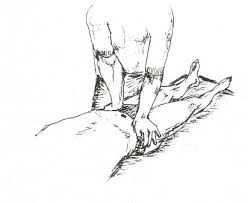by: Collin McDonald PA-C
Patients with pain can be complicated, pain generators are often located in close proximity to alternate sources of pain. Couple this with differing insurance requirements for testing and treatment and you may find yourself missing opportunities to solve a relatively simple problem. Combating this problem requires a knowledge of insurance prerequisites and an exceptional physical exam.
I have recently overhauled my diagnostic criteria for SI joint testing for the above-mentioned reasons. In literature review and in practice we find the SI joint to be a primary or secondary pain generator in 10-15% of patients with low back pain.
A focused physical exam with high-value sensitivity and specificity will allow you to quickly land on the diagnosis and avoid those pitfalls of frequently changing insurance guidelines.
Below I outline five simple, non-invasive provocative maneuvers that simplify the diagnosis. When three of these tests reproduce sacroiliac joint pain, the percentages for specificity and sensitivity hover around 90%.
- Palpation – Initially palpate over the PSIS with the patient standing (You will do this again in a prone position on the exam table)
- Distraction – With your patient supine apply moderate pressure bilaterally over the ASIS 3-4 times.

- Fabers (Patricks) – With your patient, supine lay the lateral right ankle over the distal left thigh in a figure 4 position. Apply moderate downward pressure to the right knee and the left ASIS. Pain should be posterior, if the anterior pain is noted, think hip. Repeat for left SI joint.

- Gaenslens – With your patient supine let the left leg hang off the edge of the exam table, have the patient grasp the right knee with both hands and pull toward their chest. Apply moderate counter pressure to each leg to reproduce SI joint pain. Repeat on the opposite side.

- Yeomans – With your patient prone and the right knee flexed to 90 degrees place your left hand over the sacrum to stabilize and your right hand under the flexed knee. While maintaining 90-degree flexion, extend the hip by lifting the knee. Repeat for the left SI joint.


